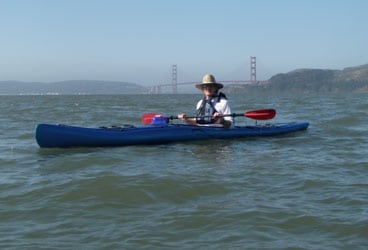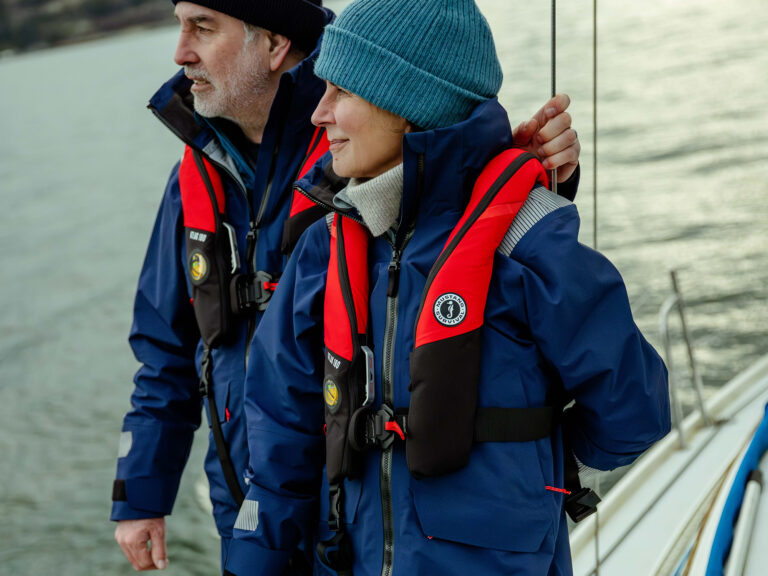
The kayaking bug bit me hard back in the 1990s, and I’ve been at it more or less steadily ever since. In many ways, kayaks are the perfect complement to sailboats. You don’t need wind; they can take you into the shallows beyond the range of any keelboat; and paddling is an excellent cardiovascular and upper-body workout, one that keeps you strong, fit, and in good shape for hoisting sails, grinding winches, and addressing the multitude of physical tasks that are part and parcel of going to sea under sail.
Over the years, I’ve acquired a couple of rotomolded plastic kayaks-a decked 15-foot Aquaterra Scimitar ocean kayak and an open Cobra Tourer sit-on-top number-that are virtually indestructible. I think of them as the seagoing equivalent of my pickup truck: They’re versatile, rugged, and utilitarian, and over they years they’ve acquired more than a few dings, nicks, and scratches (just like my truck). As Cormac McCarthy so eloquently put it in his modern classic, All the Pretty Horses, they’ve been “rode hard and put away wet.”
When I joined the Around the Americas expedition, which is leaving Seattle and heading north on May 31, I knew we’d need kayaks aboard, for all the reasons listed above, and for a brief moment I even contemplated bringing along my pair of “S.U.V.s.” But because of their length and weight, I knew they’d be a cumbersome chore to store and launch. I figured there had to be a better alternative. Plus, we were headed north, where kayaks are indigenous craft, and it seemed, well, exceedingly lame to be paddling a pair of beaters.
About that time, I came across a classified ad in, of all places, Cruising World magazine. The Little Wing kayaks from Warren Light Craft in Salem, Massachusetts were eye-catching, to say the least. Light and colorful, with a distinctive flare and style, they looked like they’d be a blast to paddle. And compared to my old plastic boats, I reckoned paddling one might be like upgrading from a Jeep to a Mercedes.
To make a long story short, I contacted the father-and-son team who build the Little Wings-M.I.T. graduates and engineers Ted Warren and his son, Zac-and to my everlasting gratitude and amazement, they offered to loan the expedition a couple of carbon-fiber Little Wings, the LW 12.5, weighing in at just 22 pounds, and the slightly more substantial LW 14, at 26 pounds. The complete line of Little Wings ranges up to 18 feet and includes a 15.5-footer that can quickly and easily be transformed into a one-person trimaran with the addition of an optional rig and amas.
Ted Warren, as I discovered when I drove to Salem to grab the boats for my cross-country drive, is also a naval architect whose first love is light, fast trimarans. That said, he’s a bit of a traditionalist, which is evident in the sweet lines he’s crafted for the Little Wings. In fact, the most engaging feature of the Little Wing fleet may be their trim and tidy reverse transoms: L. Francis Herreshoff would certainly have approved.
As I was leaving their shop, Zac confessed that the blue LW 14 I’d been loaned had a curious nickname: Shark Bite. Though it’d obviously been repaired, there was a backstory to the handle. “The employee who smashed the side of it into the rocks was embarrassed, to say the least, so he started saying that a shark bit it,” said Zac. With that, I headed for the open road.
A couple of weeks later, in San Diego, I launched the boats from the Southwestern Yacht Club and had a quick paddle. It was a beautiful day and the seas were flat, and while the boats were a cinch to unload and seemed sprightly enough on a calm afternoon, I was anxious to try them out in some waves and current to get a better gauge on their performance. It seemed more than a little prudent to get some miles under our collective keel before setting out in more tempestuous waters off Alaska and beyond.
As it turned out, I didn’t have to wait long.
A couple of days later, driving north toward Seattle, I paid a visit to an old sailing pal and writer, Rob Moore, at his home near Sausalito. Rob is relatively new to kayaks-a very accomplished racing sailor, he calls himself a “PHRF paddler”-but he had a fairly ambitious idea. He suggested that we launch from Sausalito and paddle out and around Angel Island, a roughly 10-mile circumnavigation through the stunning waters of San Francisco Bay.
It was a still, hot morning as we pointed the bows out past Richardson Bay and into open water. Rob suggested a clockwise transit of the island, and as we slid up the eastern flank, we enjoyed a nice boost from the start of the incoming flood tide. By the time we’d made it to the infamous Immigration Station about three-quarters of the way around-Angel Island has a fascinating history and has been referred to as California’s version of Ellis Island, though it also served as a grisly detention center during World War II-my legs and butt were pretty numb, so we beached the boats and had a snack and a walk. We also swapped kayaks, with Rob taking command of the LW 12.5 while I hopped into good ol’ Shark Bite.
Once out of the island’s lee, we were both pretty surprised to encounter a sporty 15-knot southerly churning over Raccoon Strait, the deep waters of which were roiled by the now-ripping 4-knot flood. Rob and I glanced at each other, warily, and then got on with it. There was only about a mile separating us from the open strait and the more protected waters inside the Tiburon Peninsula, and there was only one way to get there.
And that’s when I fell for the good ship Shark Bite. The boat’s integrated skeg kept it tracking like a train, even when I paused for a moment to have a look around; my old boats don’t enjoy that level of directional stability and would’ve rounded up aggressively in the same conditions. Moreover, even though I was basically on the equivalent of a close reach, a wet angle in a kayak, the boat’s forward deck flare (hence the “wing” in Little Wing) provided a welcome hedge against boarding seas, with only the odd dabble of ocean making its way to the cockpit (and a good thing, too, as I’d been lulled into complacency in the island’s lee shore and wasn’t wearing my spray skirt).
We were back on the beach a little less than three hours after we’d set off. I’d wanted a taste of blue rollers and moving seas before heading north into less forgiving waters, and the Little Wings had passed our sea trials with flying colors. I’m certainly looking forward to more Shark Bite encounters.








